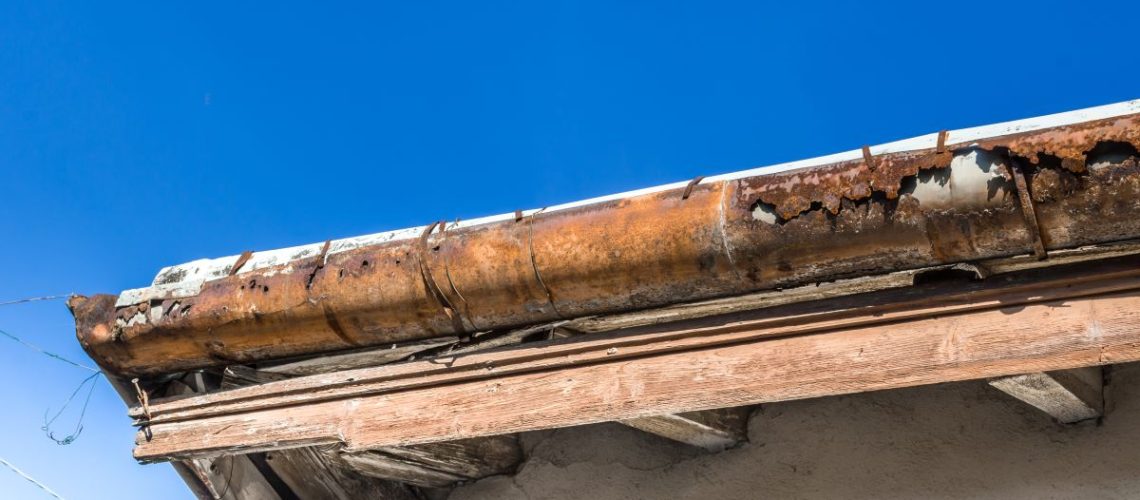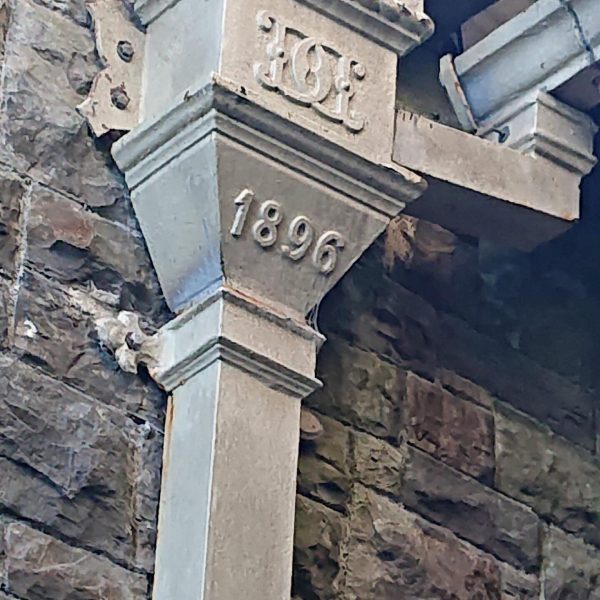


When it comes to period and historic buildings, every detail matters. From the architecture to the materials used, preserving the integrity and authenticity of these structures is paramount. While modern advancements have introduced many materials for construction and restoration, not all are suitable for maintaining the essence of historic buildings. This blog delves into why steel gutters and pipes fall short of period properties, and champions cast iron as the material of choice. With its longevity, aesthetic compatibility, and reduced noise benefits, cast iron is the only fitting option for such venerable structures.
Lack of Longevity
While known for its strength and durability in contemporary construction, steel does not offer the same lifespan as cast iron, especially in the context of historic buildings. Steel’s susceptibility to corrosion, particularly when exposed to water and moist conditions, can lead to significant deterioration. This corrosion undermines the structural integrity of gutters and pipes and necessitates frequent replacements, disrupting the fabric of historic buildings and adding to maintenance costs.
Aesthetic Discord
One of the most glaring issues with using steel in period and historic buildings is the lack of aesthetic sympathy with the original materials. With its modern look and feel, steel can starkly contrast with the traditional architecture of historic properties. This discord disrupts the visual harmony and can detract from the authenticity and value of the building. Authenticity in restoration practices is crucial to preserving such properties’ historical significance and appeal, and choosing materials is a paramount concern.
Increased Noise Pollution
Another lesser-known disadvantage of steel is its contribution to increased noise pollution. Steel gutters and pipes, when hit by rainwater or affected by thermal expansion, can produce significantly more noise compared to their cast iron counterparts. This can be particularly intrusive in the tranquil setting of historic buildings, where preserving the atmosphere and serenity is often a priority.
Enhanced Durability and Longevity
Cast iron boasts superior durability and a significantly longer lifespan than steel, making it ideal for restoring period and historic buildings. Its resistance to corrosion and weathering ensures that cast iron gutters and pipes maintain their integrity over decades if not centuries. This longevity not only preserves the structural and functional aspects of the building but also aligns with the principles of sustainable restoration by minimizing the need for frequent replacements.
Aesthetic Compatibility
Cast iron on historic buildings is a matter of practicality and aesthetic integrity. With its classic appearance and ability to be cast into intricate designs, cast iron offers a seamless match to the architectural styles of period properties. This material complements the original features of historic buildings, maintaining their character and charm. The visual continuity achieved with cast iron ensures restoration efforts enhance rather than detract from the building’s historical value.
Ornamental Hopper Head – Dinefwr Park, Wales

Reduced Noise Impact
In addition to its durability and aesthetic appeal, cast iron significantly reduces noise pollution, a vital consideration for the ambience of historic buildings. Cast iron’s density and thickness dampen the sound of rainwater flowing through gutters and pipes, ensuring a quieter environment. This quality is particularly appreciated in settings where maintaining a serene and authentic atmosphere is essential to the building’s charm and appeal.
The restoration of period and historic buildings demands a thoughtful approach to material selection, where the goal is to preserve the past while ensuring the structure’s longevity and functionality. While modern materials like steel offer particular advantages in contemporary construction, they fall short in the context of historic restoration. With its unmatched durability, aesthetic harmony, and reduced noise benefits, cast iron stands out as the only material that truly aligns with the needs and values of preserving historic buildings. By choosing cast iron for gutters and pipes, we pay homage to the past, ensuring these architectural treasures stand the test of time for future generations to admire and learn from.
Tuscan Foundry specialises in heritage building conservation, offering various site surveying services tailored to the needs of maintaining and restoring historic buildings’ cast iron gutters and pipes. Our approach integrates traditional expertise with modern technology, notably through aerial platforms. Our survey methods allow for comprehensive and detailed surveys of hard-to-reach areas, such as high-level guttering and pipework, without the risks and limitations of traditional scaffolding.
We can offer services including office-based drawing take-offs (no charge), site ground surveys, and high-level aerial platform surveys (both chargeable).
Advanced Aerial Surveys: Tuscan Foundry employs aerial platforms to conduct thorough inspections and assessments from a safe distance, minimising physical contact with the structure.
Accurate Quotations and Assessments: This technique enables us to provide more accurate quotations and detailed reports, ensuring that restoration or maintenance work is precise and cost-effective.
Minimising Risk and Disruption: The aerial approach reduces the risk to surveyors and lessens the impact on the building, preserving its integrity while providing essential survey data
Enhanced Documentation: High vantage points offered by aerial platforms allow for better photographic documentation, which is crucial for planning and executing restoration projects.
Tuscan Foundry’s use of aerial platforms exemplifies our use of access technologies in heritage conservation, ensuring that these historical structures are maintained with the utmost care and expertise.